How is MASH severity staged? What would an ideal MASH NIT algorithm look like?
Chat with MASLD AI

Hi, I am MASLD AI.
Suggested Questions :

MASLD AI 07:10 AM

Thank you to Madrigal for sponsoring this FAQ Video Module.
In this GHAPP FAQ Video Module, Jonathan Yeh, a physician assistant at the Center for Liver Disease and Transplantation at Columbia University Irving Medical Center, discusses advancements in diagnosing and staging metabolic dysfunction-associated steatohepatitis (MASH). He explains the transition from traditional liver biopsy to non-invasive testing methods such as FibroScan and the Enhanced Liver Fibrosis (ELF) test for assessing fibrosis stages. Jonathan highlights the use of these methods, in combination with blood tests, to provide reliable staging of fibrosis in patients with MASH. For more information, visit the GHAPP website or ACE app.
Related FAQ
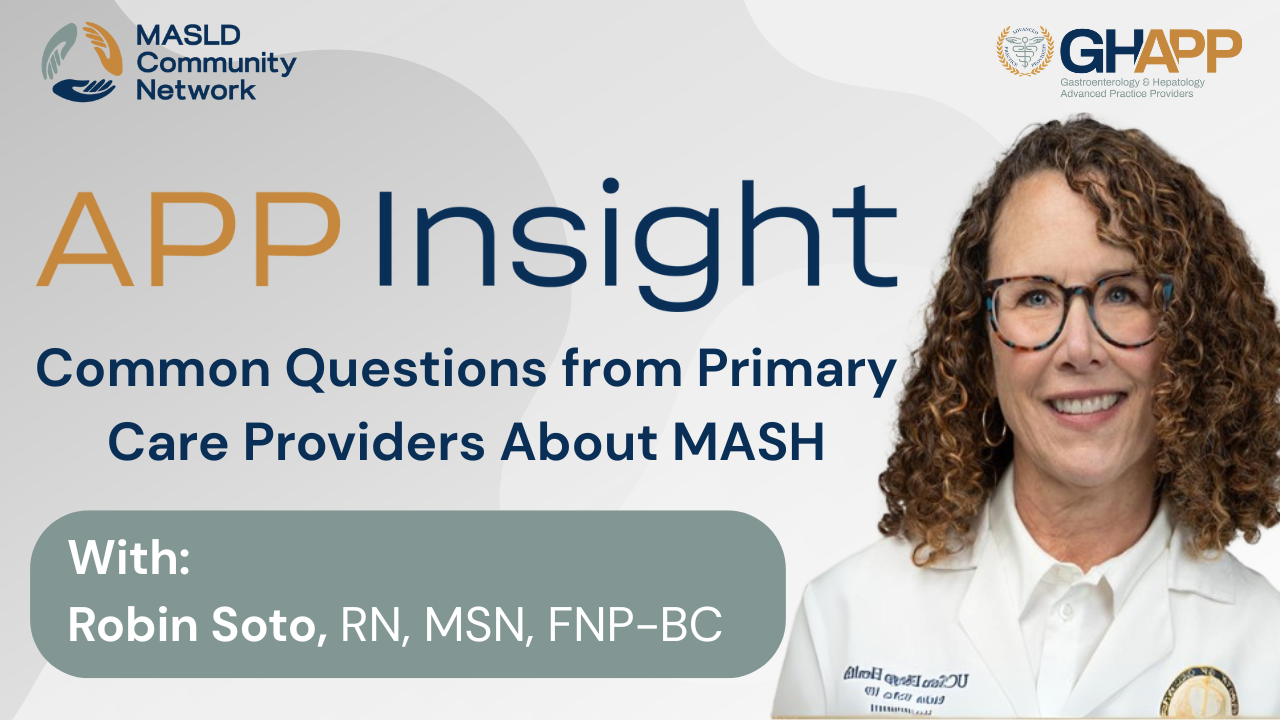
Common Questions from Primary Care Providers About MASH

In this educational video, Robin Soto, RN, MSN, FNP-BC from UC San Diego Health, answers common questions from primary care providers about the progression and management of MASLD (Metabolic dysfunction-associated steatotic liver disease) and MASH (Metabolic-associated steatohepatitis). She addresses the often-misunderstood reality that fatty liver disease can progress to cirrhosis, even in patients with no history of alcohol use—challenging the stigma that surrounds liver disease. Robin explains how MASH is a progressive condition, and if left unmanaged, can lead to advanced fibrosis and liver failure. She also shares practical dietary advice for patients, highlighting the benefits of the Mediterranean diet—rich in healthy fats, fiber, and low in processed foods and sugars—as recommended by hepatology societies like AASLD. Importantly, she emphasizes that even modest weight loss (3–10%) can significantly improve steatosis, inflammation, and even reverse fibrosis. This video is a valuable resource for clinicians and patients alike, focused on prevention, early intervention, and empowering lifestyle changes.
Watch Now
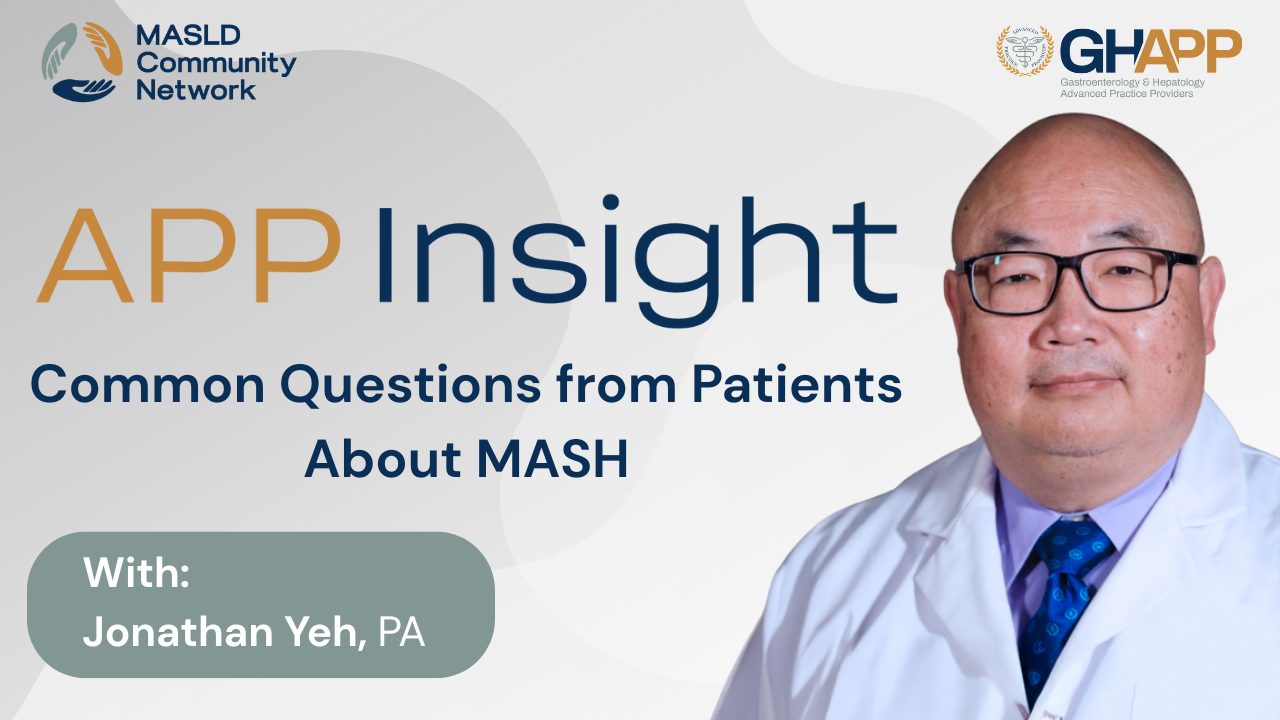
Common Questions From Patients About MASH

In this video, Jonathan Yeh, PA, answers three of the most frequently asked questions about MASH—Metabolic Dysfunction–Associated Steatohepatitis—and offers practical advice for understanding and managing this progressive form of fatty liver disease. He begins by explaining what MASH is: an inflammatory, more advanced stage of MASLD (Metabolic Dysfunction–Associated Steatotic Liver Disease), driven by abnormal fat accumulation in the liver due to impaired fat transport. Jonathan then breaks down the treatment approach, emphasizing the importance of lifestyle modification—particularly diet and exercise. He highlights the benefits of a green Mediterranean diet, regular physical activity, and sustainable weight loss, which can improve or even reverse MASH in many patients. For individuals with more advanced fibrosis, pharmacologic treatment with resmetirom (Rezdiffra) may be indicated. This concise FAQ offers helpful guidance for patients and providers alike on tackling MASH with evidence-based strategies.
Watch Now
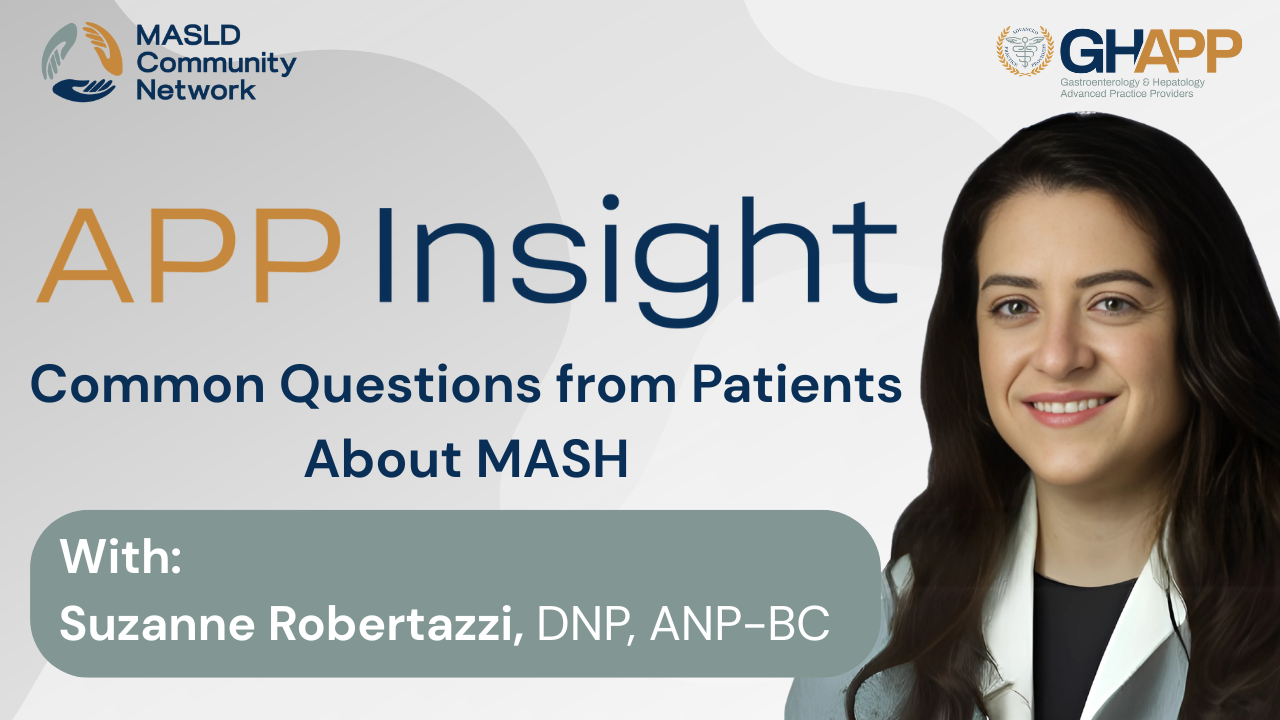
Common Questions from Patients About MASH

In this focused episode, Suzanne Robertazzi, NP at the Washington DC VA, shares expert insights on how to prevent recurrence of MASH (Metabolic-associated steatohepatitis) and MASLD (Metabolic dysfunction-associated steatotic liver disease) in liver transplant recipients. Drawing on her experience caring for post-transplant veterans, Suzanne explains that MASH can return even after liver transplantation, making ongoing metabolic management essential. She outlines key strategies including tight blood sugar and blood pressure control, especially since transplant medications can contribute to hypertension. Suzanne also emphasizes the importance of introducing regular physical activity post-recovery and adopting a Mediterranean-style diet—while tailoring nutrition guidance to meet the needs of patients in urban settings with limited access to fresh foods. This video is a must-watch for transplant teams, hepatology providers, and patients seeking to extend the life and health of their new liver through evidence-based lifestyle and clinical interventions.
Watch Now
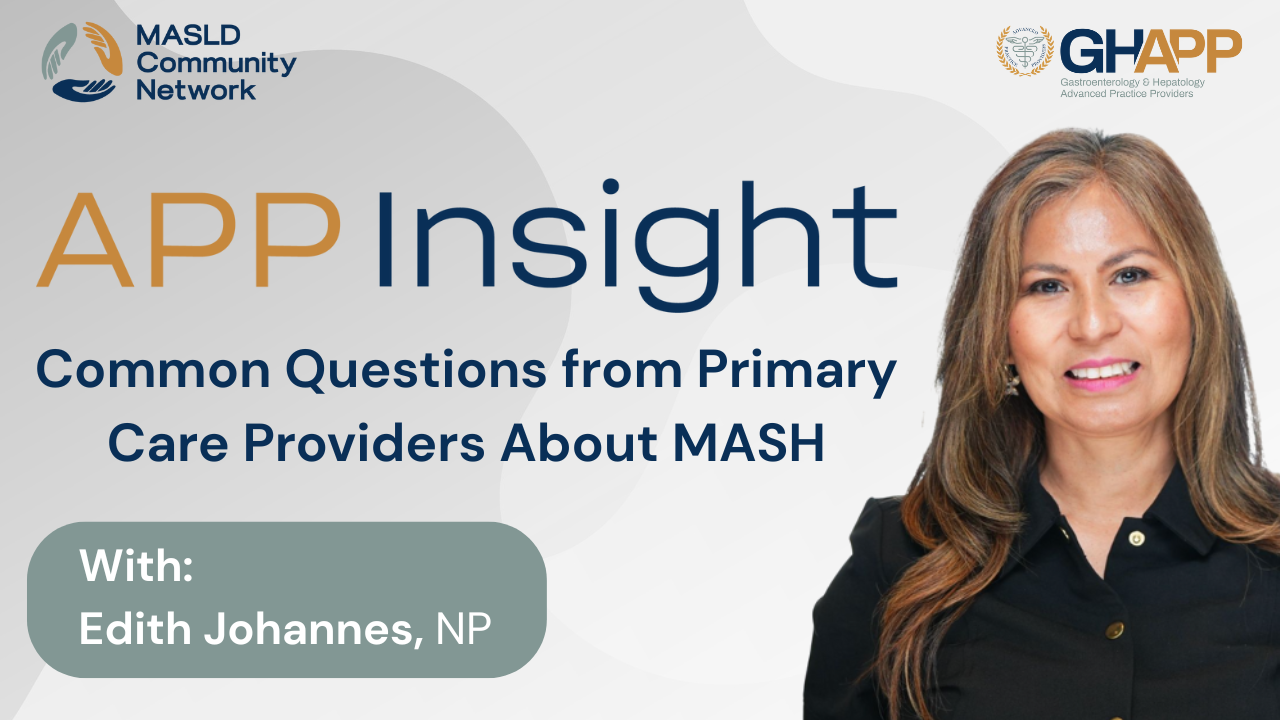
Common Questions From Primary Care Providers About MASH

In this MASLD Community Network episode, Edith Johannes, NP at UCLA Health, shares evidence-based guidance on one of the most important questions in managing Metabolic Dysfunction–Associated Steatotic Liver Disease (MASLD) and Metabolic Dysfunction–Associated Steatohepatitis (MASH): how much weight loss is needed to improve liver health. Drawing on years of experience in hepatology and liver transplant care, Edith explains how weight loss can reduce liver fat (steatosis), decrease inflammation, improve or even reverse fibrosis, and support better overall metabolic health. Research shows that achieving more than 10% weight loss can result in 100% improvement in steatosis, MASH resolution in 90% of patients, and fibrosis regression in over 80%. Even smaller amounts of weight loss—5% to 10%—provide significant liver and metabolic benefits, while exercise and dietary changes can help improve liver function even without weight loss. Edith also discusses when additional treatments like GLP-1s, bariatric surgery, or resmetirom may be needed. This video is essential for healthcare providers, patients, and caregivers seeking practical, science-backed strategies to manage MASLD and MASH effectively.
Watch Now
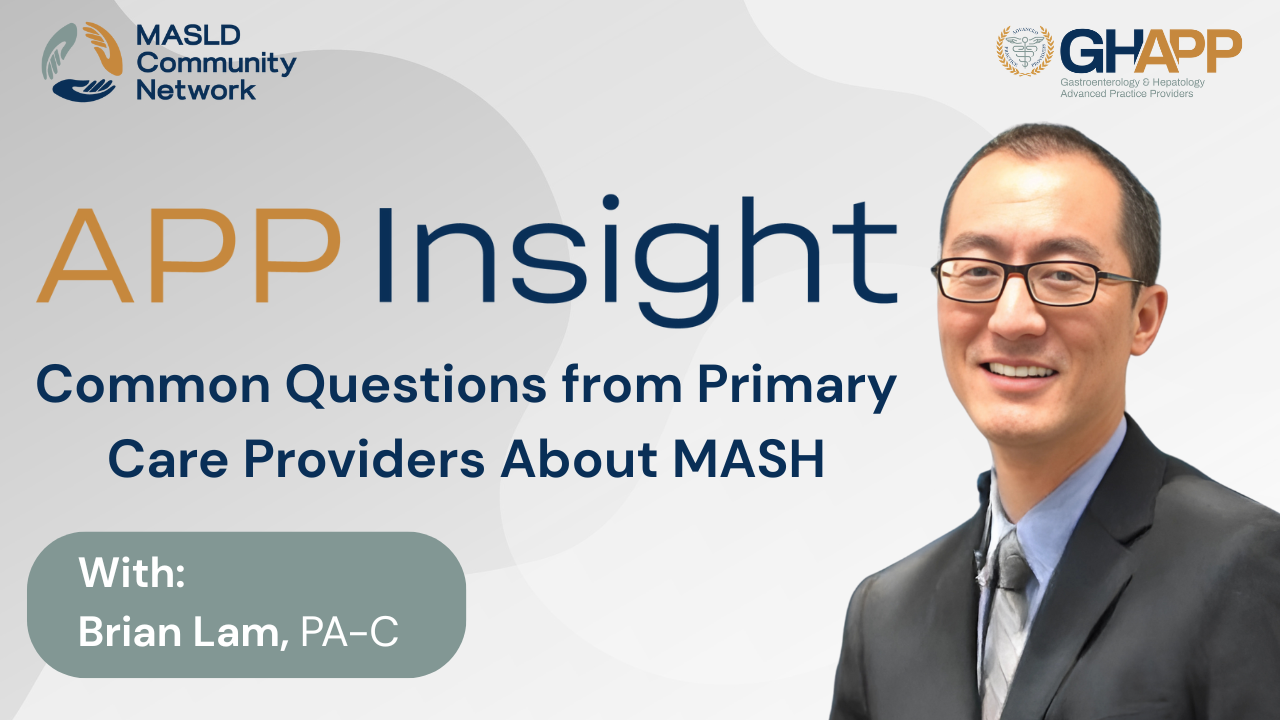
Common Questions from Primary Care Providers About MASH

In this FAQ session, Brian Lam, PA-C, breaks down a common question he receives from primary care providers, endocrinologists, and even other GI specialists: Which patients with fatty liver should be referred to hepatology or GI for further evaluation? Using a clear and practical approach, Brian explains how to apply FIB-4, a simple lab-based non-invasive test, to guide referrals. He emphasizes that patients with metabolic syndrome—especially those with diabetes—are at significantly higher risk for MASH (Metabolic dysfunction-associated steatohepatitis), with roughly 1 in 3 diabetic patients affected. If the FIB-4 is greater than 1.3, or greater than 2.0 in adults over 65, it's time to refer. Brian also highlights the utility of FIB-4 with reflex to ELF, now available through major labs like LabCorp and Quest, as an efficient two-step method to detect advanced fibrosis and at-risk MASH. This video is perfect for busy clinicians looking for a referral-friendly workflow to catch MASH early and improve liver health outcomes in high-risk populations.
Watch Now
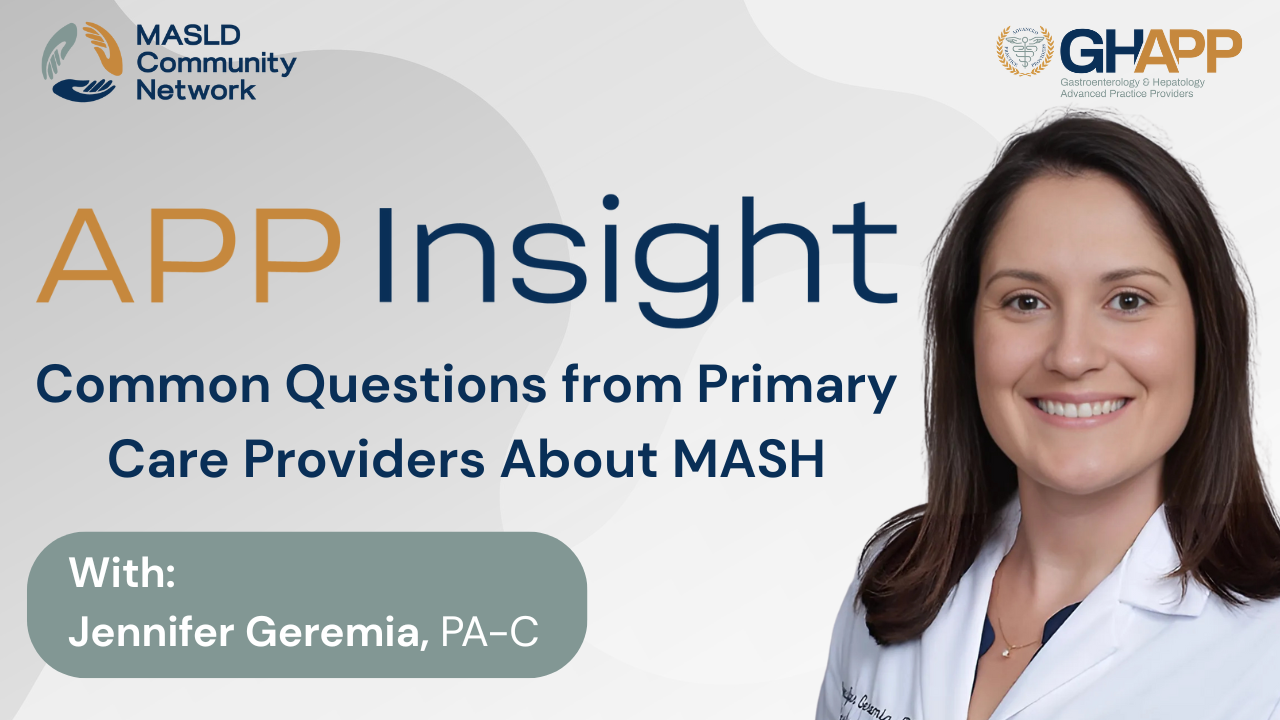
Common Questions From Primary Care Providers About MASH

In this informative session, Jennifer Geremia, PA-C, a seasoned gastroenterology physician assistant in tertiary care Boston, addresses some of the most common questions primary care providers have about identifying and managing patients with fatty liver disease, MASLD (Metabolic dysfunction-associated steatotic liver disease), and MASH (Metabolic-associated steatohepatitis). Jennifer highlights the importance of using FIB-4 as a first-line non-invasive test (NIT) in high-risk patients with diabetes, obesity, or other metabolic conditions—noting how easily this tool can be integrated into routine labs via the EMR. She underscores that the liver is often overlooked in chronic disease management and makes a strong case for routine fibrosis screening alongside cardiovascular and diabetes evaluations. The talk also dives into actionable next steps after FIB-4 testing, including elastography, ELF testing, and referrals to GI when needed. Jennifer closes by discussing realistic lifestyle intervention goals—especially the importance of 7–10% weight loss for meaningful reductions in steatosis and fibrosis risk. This session is a must-watch for PCPs, APPs, and clinicians managing metabolic comorbidities and seeking practical, evidence-based strategies for early MASH detection and management.
Watch Now
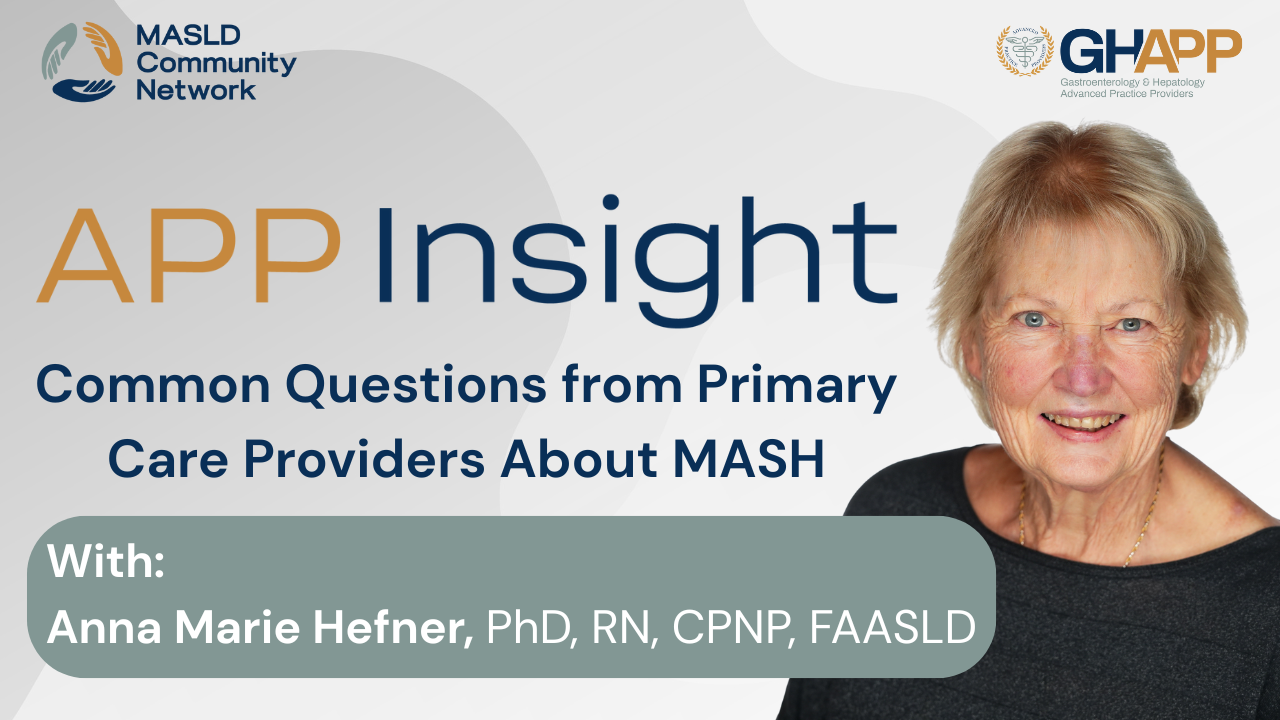
Common Questions From Primary Care Providers About MASH

In this educational video, Anna Marie Hefner, CPNP, a hepatology nurse practitioner at the Southern California Liver and GI Centers, shares valuable insights for primary care providers managing patients with fatty liver disease. Anna Marie explains how her community-based practice collaborates with local clinicians to streamline care for patients with MASLD (Metabolic Associated Steatotic Liver Disease) and MASH (Metabolic Associated Steatohepatitis). She outlines a clear approach for evaluating patients with elevated liver enzymes and fatty liver, including when to use non-invasive testing (NITs) such as FibroScan and how to interpret fibrosis stages (F0–F4) to guide next steps in management. Anna Marie emphasizes that patients with early-stage fibrosis (F0–F1) can often be managed in primary care with regular weight monitoring, labs, and annual imaging, while those with advanced fibrosis (F3–F4) require hepatology referral for specialized care and cirrhosis management. She also discusses how her team supports community physicians—offering FibroScan services, consultative guidance, and direct communication to ensure patients receive coordinated, evidence-based care. This session is a practical resource for APPs, hepatology teams, and primary care providers navigating fatty liver disease screening, risk stratification, and referral pathways.
Watch Now
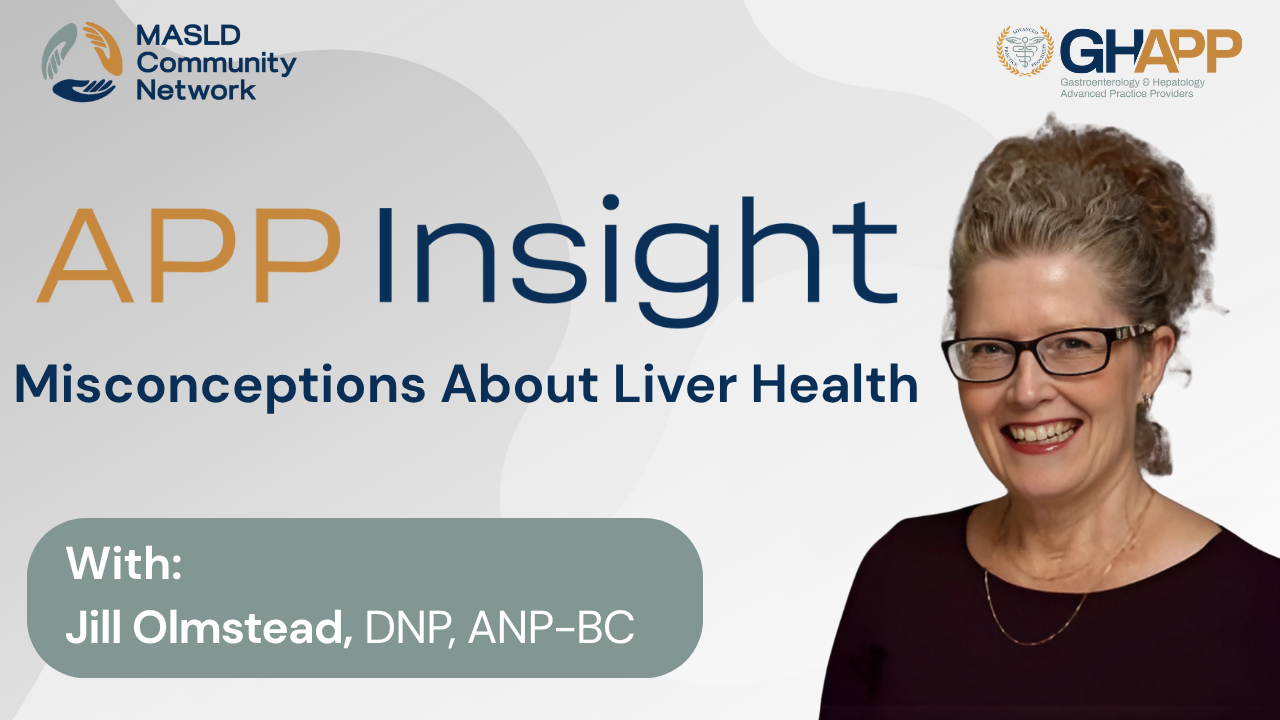
Misconceptions About Liver Health

Join Jill Olmstead, DNP from Providence Health in Southern California for an eye-opening GHAPP MASLD Community Network Insight on the biggest misconceptions about liver health. In this session, Jill explains why fatty liver disease is not “normal” or harmless, but a serious metabolic disorder linked to obesity, prediabetes, diabetes, and high cholesterol. She highlights how fat in the liver causes cellular injury, leading to fibrosis and even cirrhosis if untreated. Jill also addresses the common myth that alcohol is safe in moderation—reminding patients that alcohol is a liver toxin and no amount is risk-free, despite outdated beliefs about red wine being heart-protective. This educational talk empowers providers and patients alike to recognize fatty liver disease early, manage risk factors, and adopt lifestyle changes that protect long-term liver health. Watch more from the MASLD & MASH Community Network to stay informed on advances in fatty liver disease education and care.
Watch Now
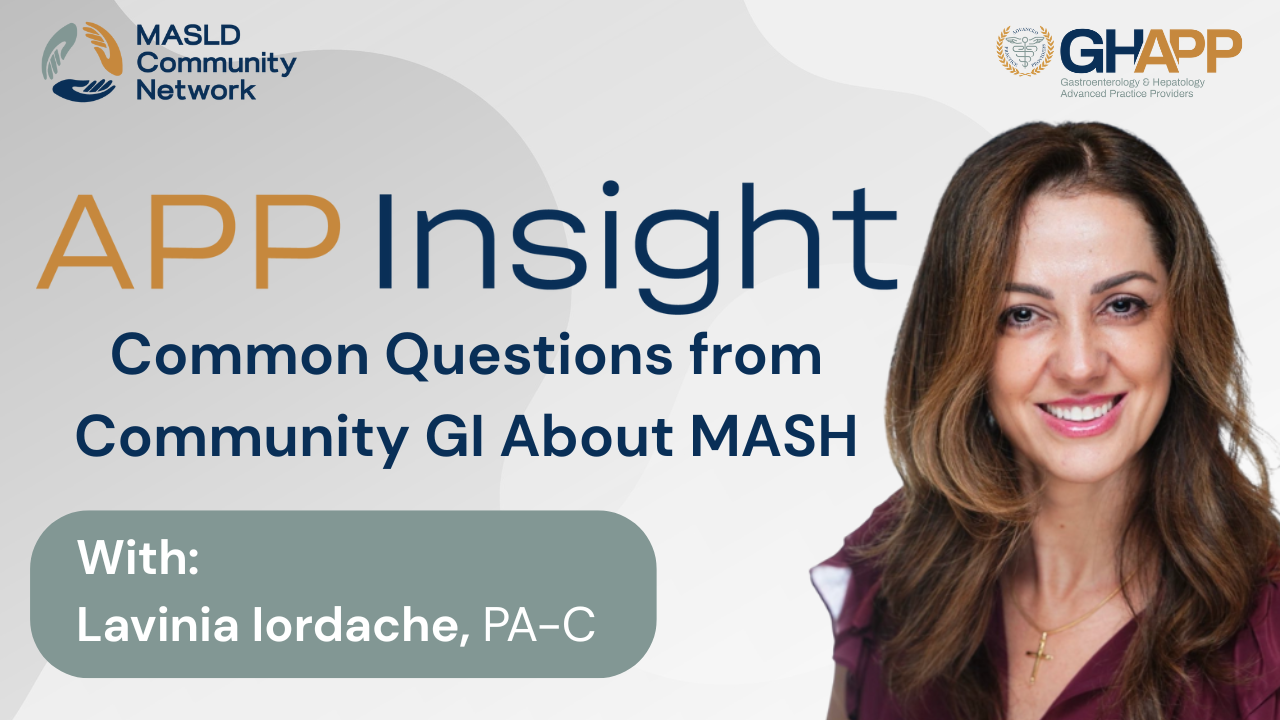
Common Questions From Community GI About MASH

In this session, Lavinia Iordache, PA-C, from the University of Miami, draws on a decade of experience in inpatient and outpatient hepatology to address common management questions related to MASLD (Metabolic dysfunction-associated steatotic liver disease) and MASH (Metabolic-associated steatohepatitis). She provides practical guidance for gastroenterology providers navigating when to monitor versus refer patients with fibrosis, how to interpret and time non-invasive testing (NITs) such as FIB-4, and when liver biopsy may still play a role—particularly in cases with persistently elevated liver enzymes despite lifestyle improvement. Lavinia also dives into the referral criteria for hepatology, the evolving role of resmetirom in stage 2–3 fibrosis, and the critical topic of HCC screening. While current AASLD guidelines limit HCC surveillance to cirrhosis, Lavinia highlights emerging evidence and EASL recommendations supporting imaging in patients with F3 fibrosis based on individualized risk factors like diabetes, genetics, and obesity. She also explains why CT or MRI is often preferred over ultrasound in MASLD patients due to obesity-related imaging limitations. This is a must-watch for hepatology and GI teams managing liver fibrosis in metabolic disease.
Watch Now
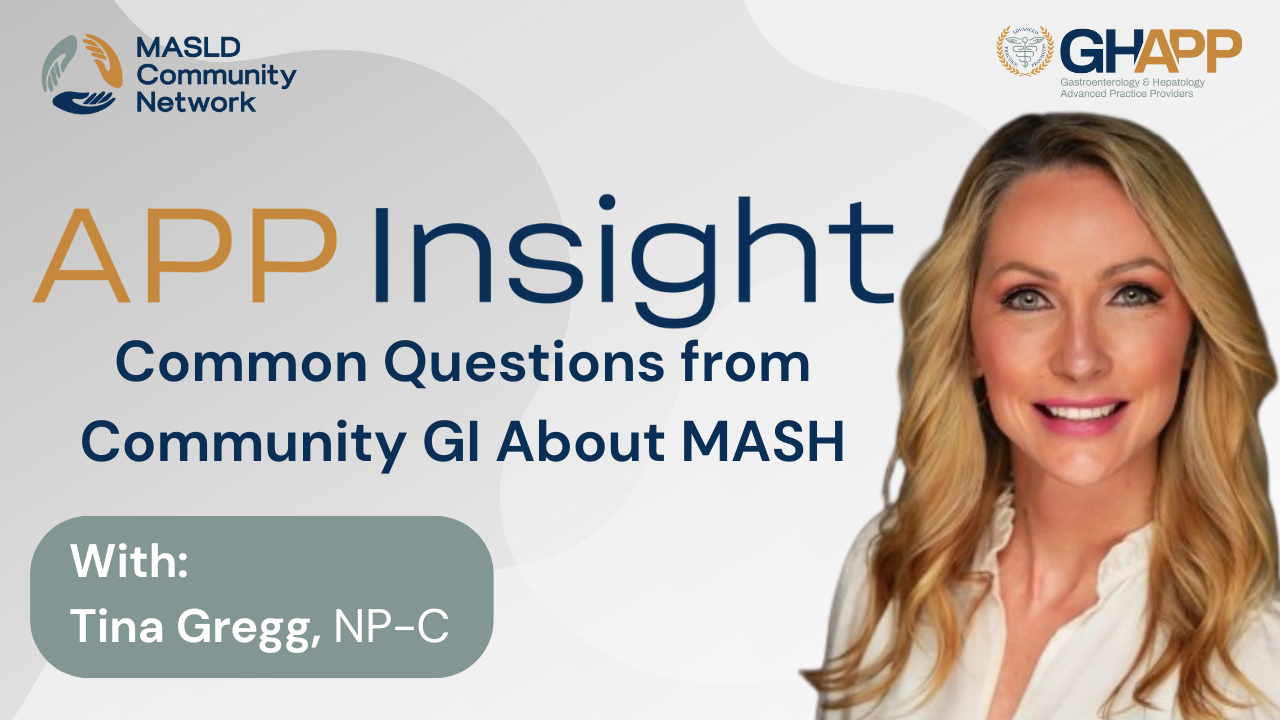
Common Questions From Community GI About MASH

In this APP Insight, Tina Gregg, NP-C, from GI Associates, addresses two of the most common questions about MASLD and MASH that clinicians encounter in practice. First, she clarifies that normal liver enzymes do not rule out MASH or advanced fibrosis—up to half of biopsy-proven cases can present with normal ALT and AST levels. Tina explains why liver enzymes fluctuate, why traditional reference ranges may be misleading, and how clinicians can better interpret lab results in context. She also answers another frequent question: Are statins safe in patients with MASLD or MASH? Drawing on evidence from multiple large studies, Tina emphasizes that statins are both safe and beneficial for most patients with fatty liver disease and play a key role in managing cardiovascular risk. This session, part of the GHAPP MASLD & MASH Community Network, helps APPs dispel common misconceptions and make evidence-based decisions in liver and metabolic care.
Watch Now





 January 2025
January 2025 